The LG G5 is a television that not only continues but also enhances what we loved about the previous models in the G series. Instead of following the beaten path, LG opted for a new Tandem OLED panel – and it was a resounding success. Brightness? Simply, PH E N O M E N A L. HDR effect? Close to reference. Colours after calibration? Almost perfect. Motion fluidity, low latency, and features for gamers? At an absolutely top level. The G5 performs well both in films and games, day and night, with a decoder, console, PC, or even just the remote. Of course – it is not a product without flaws. It’s a shame there is no support for DTS, viewing angles have worsened compared to its predecessor, and the remote may vary depending on the version. However, when we look at the overall picture, it is hard not to feel that this is one of the best OLED televisions available on the market, and perhaps the best. Certainly, when it comes to its versatility and image quality without having to reach for the extremely expensive models of the competition. If you are looking for a television for everything – cinema, gaming, bright living rooms, watching online content or connecting a computer – the LG G5 is a device that simply delivers on every front without compromises.
- Matching (Score)
- Our verdict
- TV appearance
- Where to buy
- Contrast and black detail
- HDR effect quality
- Factory color reproduction
- Color reproduction after calibration
- Smoothness of tonal transitions
- Image scaling and smoothness of tonal transitions
- Blur and motion smoothness
- Console compatibility and gaming features
- Input lag
- Compatibility with PC
- Viewing angles
- TV efficiency during daytime
- Details about the matrix
- TV features
- Apps
- Playing files from USB
- Sound
LG OLED G5 vs LG QNED86A / QNED85A / QNED87A
Direct compare
G54 / G51 / G55 / LW / LS
QNED85A / QNED86A / QNED87A / A6A / A6B / A6C
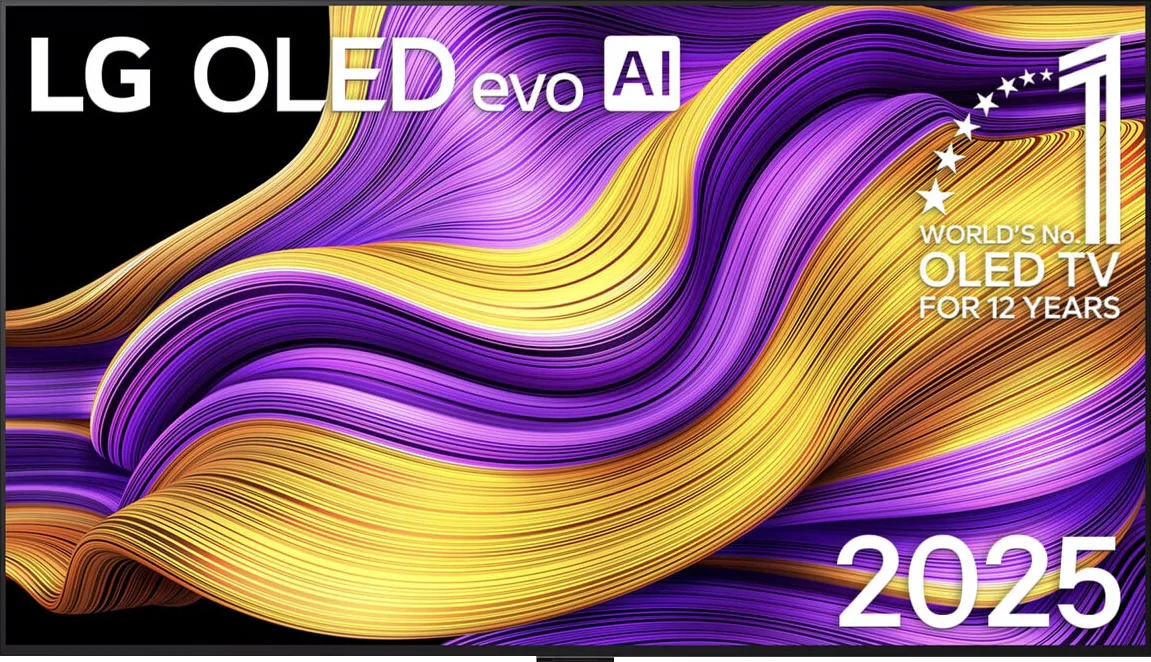

Panel type: WRGB OLED
Resolution: 3840x2160
System: WebOS
Model year: 2025
Complete the survey to find out the result

Panel type: LCD IPS
Resolution: 3840x2160
System: WebOS
Model year: 2025
Complete the survey to find out the result

Overall rating
8.9
7.0
Movies and series in UHD quality
9.2
6.4
Classic TV, YouTube
9.2
6.2
Sports broadcasts (TV and apps)
9.0
7.2
Gaming on console
9.6
8.4
TV as a computer monitor
8.8
8.0
Watching in bright light
8.0
5.8
Utility functions
8.5
8.4
Apps
9.1
9.1
Sound quality
8.7
6.0
Complete the survey to find out what fits your preferences
Advantages
Amazing black and contrast
Reference colour reproduction after calibration
Very high brightness in HDR materials
Excellent collaboration with consoles and computers
Great motion smoothness - OLED panel 165Hz
Many features for gamers: VRR, ALLM, HGIG, low input lag
Great operating system WebOS with many applications
Superb control thanks to the Magic remote with "pointer" function
120 Hz panel, good for sports and gaming
Very low input lag
Great for gamers (VRR, ALLM, HGiG etc.)
Complete set of HDMI 2.1 ports
Good compatibility with PC (excellent font readability)
Bright picture (around 700 nits in HDR), performs well in moderately bright rooms
Good viewing angles (IPS)
Support for Dolby Vision
User-friendly webOS operating system with Magic Remote and voice assistant
Ability to record programmes to USB
Disadvantages
No support for DTS audio format
Worse (though still good) viewing angles than its predecessor G4
Different versions of the remote in derivative models – it's hard to predict which version we will get
Very poor black levels and contrast due to the IPS panel
Lack of the advertised 144 Hz in PC mode
Aggressive "light bands" when local dimming is enabled (edge local dimming ruins evening movie sessions)
Confusion in model designations and versions – even televisions with the same name in different stores can have different stands (central or two feet) or frame colours, which can be very misleading when purchasing.
Our verdict
QNED86A6A is a television that truly does an excellent job in its price range when it comes to sports, gaming, and everyday TV viewing. The 120 Hz panel ensures smooth images and sharp motion, which both sports fans and gamers will appreciate. It also features low input lag along with a complete set of gaming functions such as HGiG, VRR, and ALLM. The television works just as well with a computer as it does with a console, so whether in the office or on a desk in the 43” version, it serves excellently as a work monitor. Another strong point is the webOS system. This is a fast, stable, and application-rich operating system that, paired with the Magic remote, offers very convenient operation. The new version of the remote is slimmer and fits better in the hand, while the on-screen cursor is a solution that many competitors lack. Additionally, there are classic features – USB recording, Bluetooth for headphones, and a full HDMI 2.1 set with eARC and Dolby Atmos support. This makes the televisions from the QNED85 series some of the most "multimedia" televisions in their class. However, there’s no point in mincing words; this model also has its significant flaws. Its biggest flaw is undoubtedly the contrast, or rather, the lack thereof. The IPS panel combined with edge-lit "mini-LED" is simply a very bad idea. The screen is just not suitable for watching movies in a dark living room. The blacks are bluish-grey, and local dimming can generate light strips reminiscent of lasers, which effectively spoil the desire to watch. This is not a choice that can be wholeheartedly recommended for home cinema. The second problem may not be directly related to the television itself but rather to its sales. It concerns the chaos in naming and discrepancies in derivative versions. The same model, even with the same marking, can have a different bezel colour or stand depending on the store. This can truly be frustrating for the buyer and evoke a sense of confusion. To summarise briefly: LG QNED86A6A is a great television for sports, gaming, and everyday television, with a user-friendly system and substantial functionality. But if you are looking for a screen strictly for movies or series and require deep blacks, it would be better to look towards televisions that can truly be called Mini-LEDs with full confidence.
TV appearance
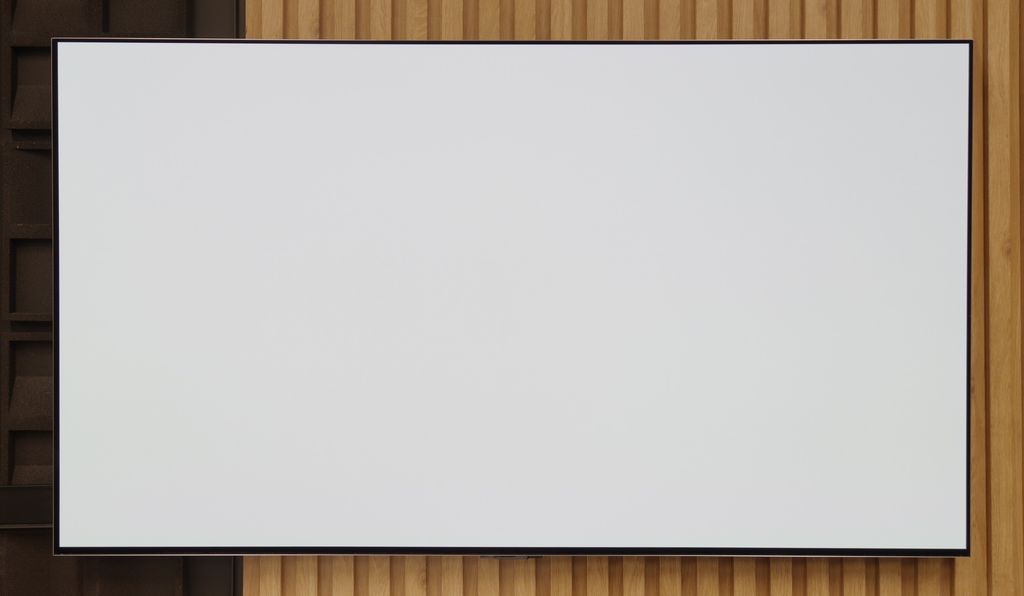
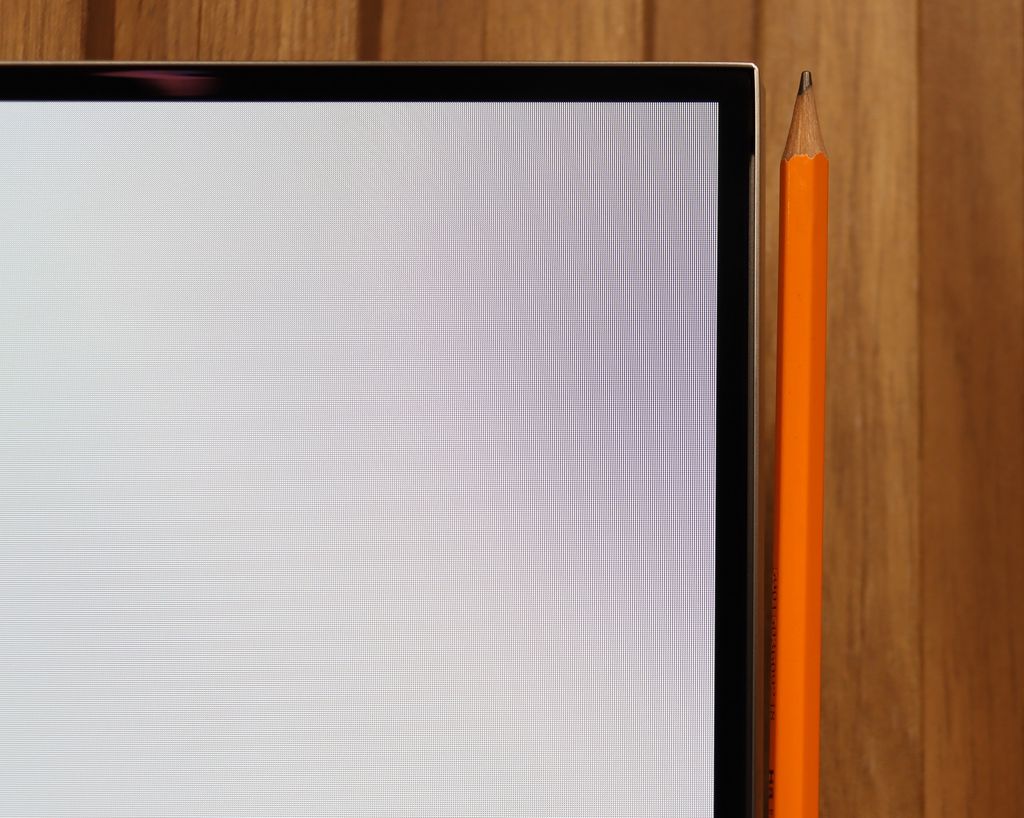
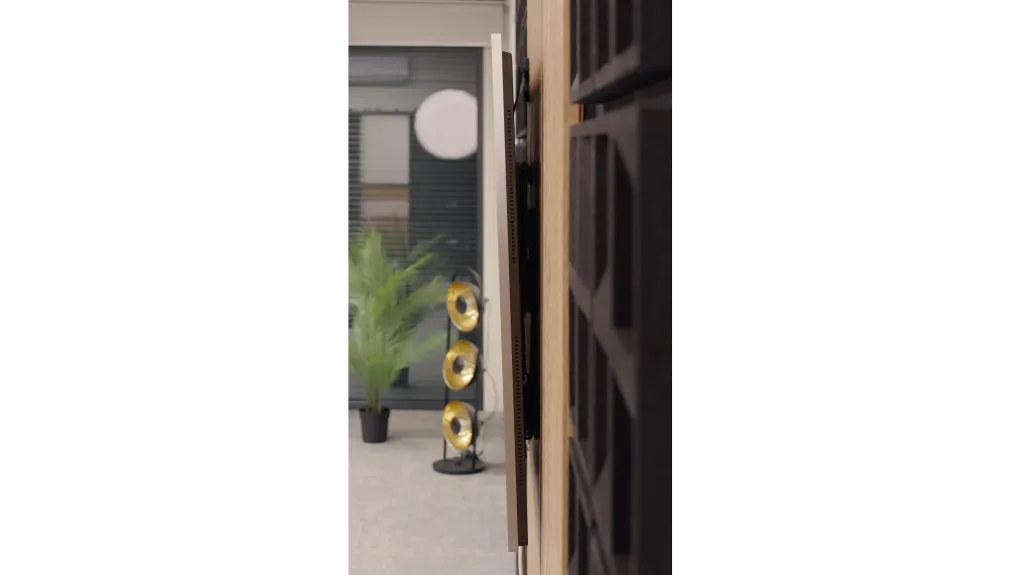



Contrast and black detail
10/10
3.7/10
Local dimming function: Yes, number of zones: 6 (1 x 6)
Contrast:

Result
∞:1

Result
∞:1

Result
∞:1

Result
∞:1

Result
∞:1

Result
4,050:1

Result
1,750:1

Result
4,800:1

Result
1,850:1

Result
1,350:1
Halo effect and black detail visibility:
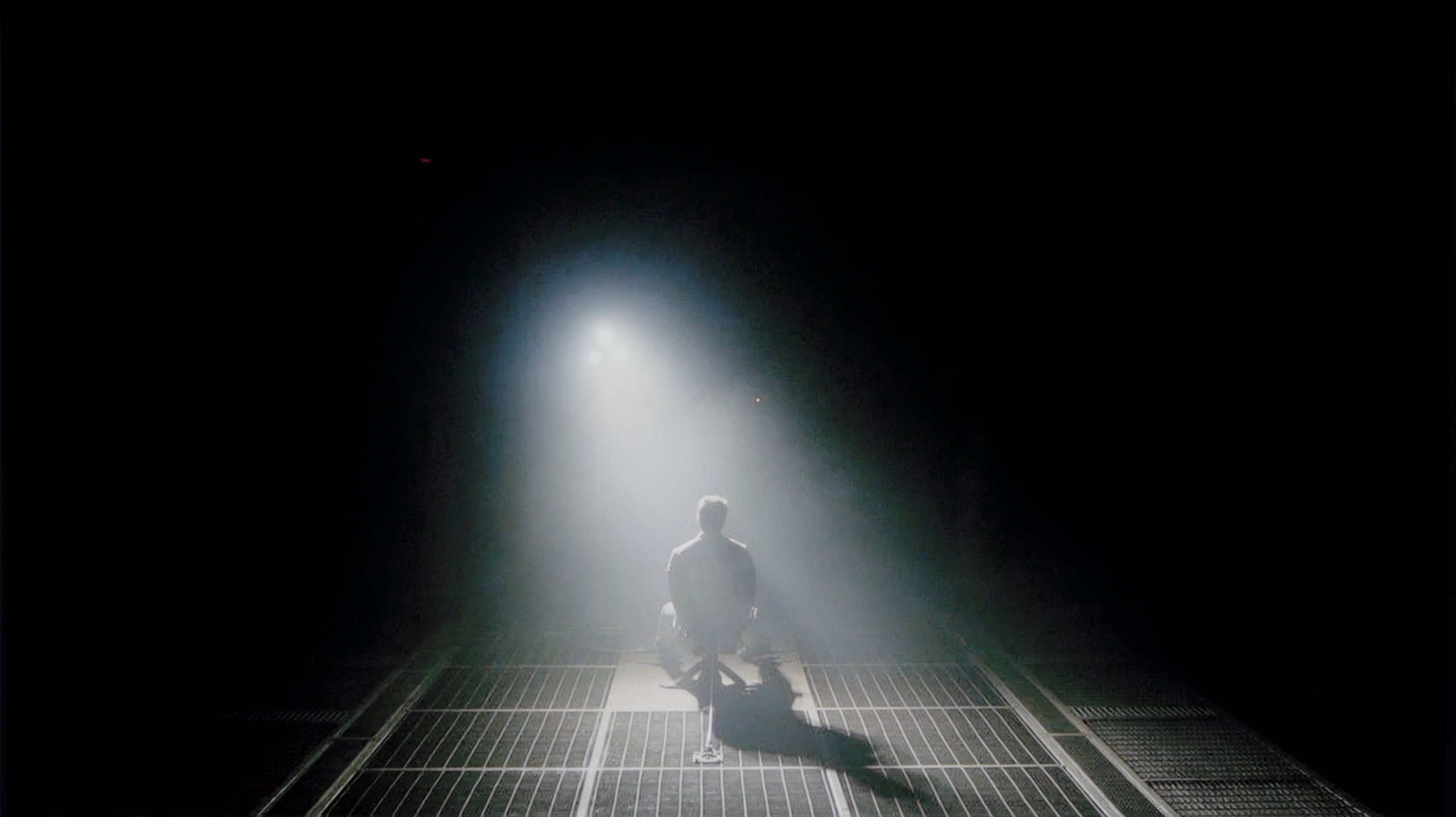

LG G5, as befits an OLED television, impresses with its quality of contrast and blackness. In scenes with a lot of dark areas, the screen looks almost perfect, offering deep, absolute black and infinite contrast – an effect that still cannot be achieved on any LCD television. The new Tandem OLED panel does not introduce any negative changes compared to previous generations – blacks are flawless regardless of the content. Watching scenes from films like The Revenant or Oblivion, the excellent separation of lights is clearly visible, without any halo effect or brightening of dark areas. In this category, the LG G5 deserves the highest rating.
Although the manufacturer describes the QNED86A as a Mini-LED television, there is no multi-zone local dimming system here like those found in more expensive models. In practice, we are dealing with traditional edge lighting, which only allows for dimming horizontal bands of the screen from top to bottom. Combined with a low-contrast IPS/ADS panel, the effect simply falls short. If we decide to leave local dimming on, a problem arises – the television can illuminate selected portions in such a way that it looks like "flying lasers" cutting across the screen. This is very distracting, and it is difficult to speak of truly cinematic experiences under such conditions. Therefore, in our opinion, it is better to turn this feature off. However, one must reckon with the fact that the contrast then drops to around 1500:1, but at least the picture does not irritate with artificial flashes.
HDR effect quality
9.1/10
6/10
Luminance measurements in HDR:

Result
2346 nit

Result
2353 nit

Result
2399 nit

Result
2353 nit

Result
2012 nit

Result
602 nit

Result
524 nit

Result
690 nit

Result
512 nit

Result
500 nit
Scene from the movie “Pan” (about 2800 nits)


Scene from the movie “Billy Lynn” (about 1100 nits)


Static HDR10


Dynamic: Dolby Vision
Dynamic: Dolby Vision


HDR luminance chart:
LG QNED86A / QNED85A / QNED87A
HDR luminance
LG OLED G5
HDR luminance
Luminance of RGB colors
LG G5 with the new Tandem OLED matrix brings the biggest change in terms of the brightness of the television. And it's substantial. This is truly an astronomically bright OLED. In every scene tested – whether it was point lights or full-screen whites from the film The Meg – the brightness on the G5 exceeded 2000 nits. Just a year ago, such values on an OLED were simply unimaginable. And here we are – the G5 is approaching, and at times even surpassing, the best Mini-LEDs on the market. A new feature of the Tandem OLED matrix is also the expanded colour gamut – and here the LG G5 performs almost perfectly. DCI-P3 reaches a full 100%, and BT.2020 is maintained at around 83%. These are some of the highest values currently available on the market – it's hard to find any other television that comes close to such results, unless we are talking about the best displays with QD-OLED panels. The G5 has nearly reference-quality HDR – both in terms of brightness and colour saturation. This is an OLED that can truly shine – and not just figuratively.
Against a backdrop of contrast and black, the brightness of the QNED86A and the overall HDR effect perform much better. This is a television that can achieve around 700 nits under the best conditions, so in terms of luminance alone, there is nothing to be ashamed of. As a result, scenes with strong lights, explosions, flashes, or bright parts of the landscape look clear and can make an impression. Interestingly, even in more challenging moments with small, contrasting elements on the screen, the television manages well with their backlighting, and the details are quite visible. The problem arises when there are many dark tones. The lack of effective local dimming causes the black to practically disappear, and instead, we get a grey haze spreading across the entire screen. This kills the sense of depth and makes the image look flat, as if it lacks a cinematic character. In bright animations or colourful family films, this will not be a problem, as vibrant colours and bright light dominate. But in horrors or productions set in darkness, these limitations are very strongly felt. As a comfort, it is worth adding that the QNED86A is actually a QLED television with a PFS LED filter, which gives it very good coverage of a wide colour gamut. Both the DCI-P3 palette and the broader BT.2020 perform really well here. This makes the colours in HDR films saturated, juicy, and with the appropriate depth – even if the black itself disappoints, the colours can save the viewing experience and make the image look attractive.
Factory color reproduction
7.8/10
5.6/10


Factory Mode
After calibration


Factory Mode
After calibration
Our test unit, the LG G5, struggled with certain issues in the factory Filmmaker mode. And although most people might have found the picture acceptable, we knew that this television was capable of much more. This mode had a clear excess of blue tint in the white balance, resulting in a significantly cooled image – particularly in HDR modes, where there was additionally a lack of red. The picture appeared cold, and its sharpness was artificially boosted and unnatural. Another significant issue was the brightness characteristics. In SDR content, the situation wasn't the worst, aside from a slight dimming of the entire image. However, it performed much worse in HDR materials – due to improper brightness management, the smallest details could completely disappear from the image, while larger, bright elements looked overexposed and lacking in gradation. Fortunately, the G5 supports calibration using 3D LUT (a tool for professionals for colour calibration), so we decided to make use of its professional capabilities and see what it could really do. Because although it wasn't tragic even before calibration, the potential of this television definitely deserved more.
We primarily tested the QNED86A in Filmmaker mode, which is designed to provide the most faithful picture. Unfortunately, right out of the box, there were quite a few shortcomings. The most noticeable was the poorly tuned white balance – there was a lack of blue, causing the overall image to take on a slightly yellowish, and at times even orange hue. An even bigger problem turned out to be the way the television manages brightness. Due to its technical limitations – specifically, local dimming that only works along the edges of the screen – the QNED86A tends to oversaturate entire scenes. This is where the flattening effect we mentioned earlier comes from. Instead of clear depth and contrast, we get something akin to “boosted brightness,” which can strain the eyes over time.
Color reproduction after calibration
9.8/10
7.6/10




After performing the calibration process using professional tools, we can confidently state that the LG G5 offers nearly reference-quality image. Most of the errors related to white balance and the ColorChecker test are below a value of 2, which is a phenomenal result, practically imperceptible to the human eye. And while one could still nitpick that in HDR films the television still has a tendency to slightly dim the smallest elements of the image, in practice this does not negatively affect the overall impression. Kudos to LG, as once again they provide the user with enormous possibilities for adjusting their display – and this, combined with the very good parameters of the panel itself, results in an image that is truly hard to beat.
What has been saved in the QNED86A6A is undoubtedly the colours. After calibration, the white balance was set with great precision, ensuring that deviations on the Colour Checker palette mostly did not exceed the visibility threshold for the human eye. In other words – the hues finally looked natural, without the strange yellow or orange tones that previously spoiled the perception. Unfortunately, even the best calibration cannot circumvent the structural limitations. The already very modest number of local dimming zones and their unfortunate placement mean that the analysis of the EOTF curve in films still showed clear over-brightening of scenes. The picture tended to flatten, lacking cinematic depth. Fortunately, this effect is not so noticeable in older productions or in SDR content. There, the calibration truly makes a difference and allows one to harness the QNED so that the image can be appealing. However, the specifics of this construction – especially the issues with contrast – cannot be completely bypassed.
Smoothness of tonal transitions
8.5/10
8.9/10






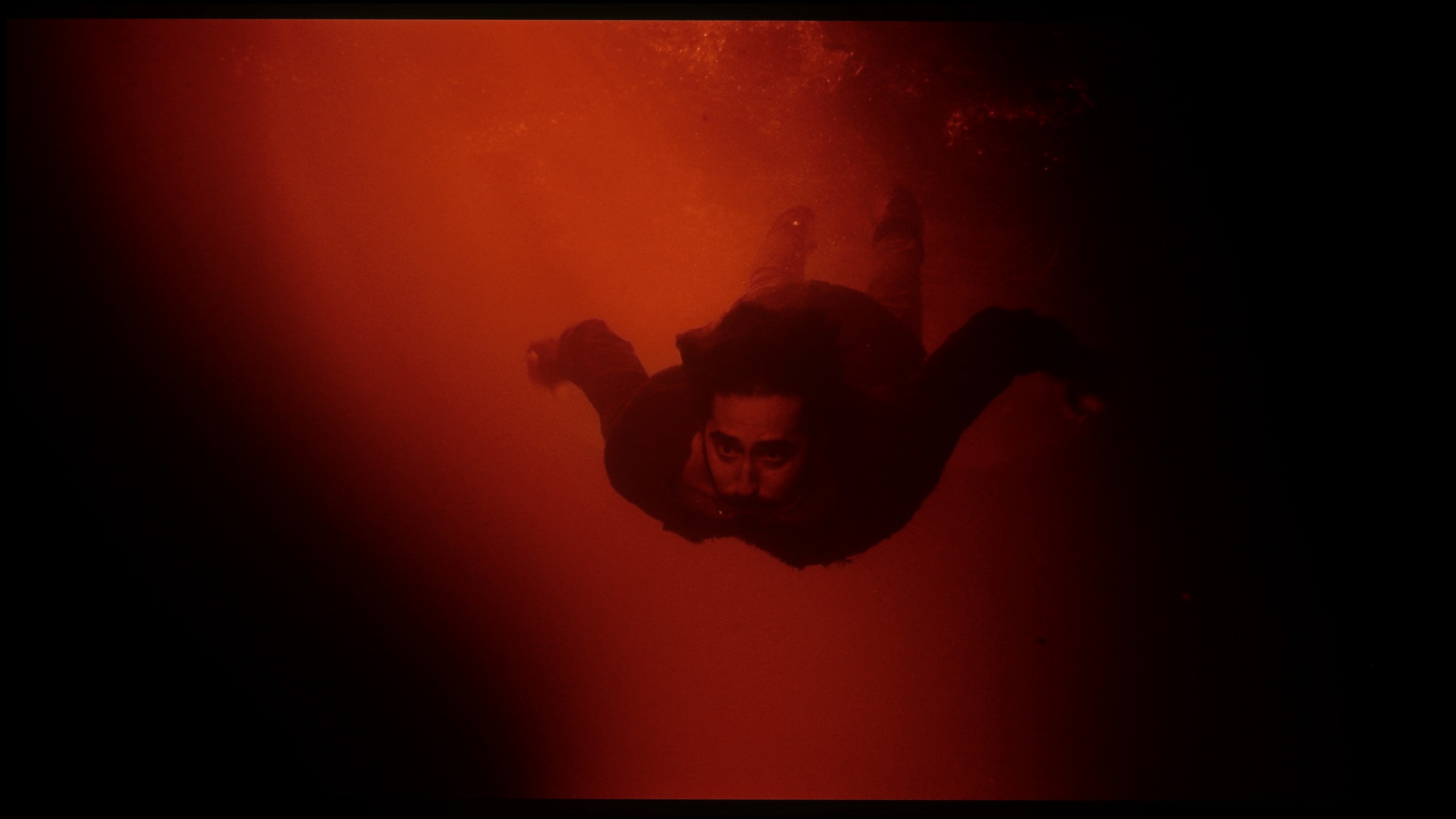





The fluidity of tonal transitions in the LG G5 is a notable step forward compared to last year's model. Not only has brightness been improved, but also the method of blending colours, which the G4 sometimes struggled with. In the vast majority of scenes, the G5 has no issues with tonal transitions – there is no visible banding typical of WOLED technology, nor are there unsightly breaks between colours. Of course, in very dark areas of the image and with shades of grey, minor imperfections can still be noticed, but these are things that the average viewer would not even register. In short – it is really good.
The colour blending is one of the stronger points of the QNED86A. During everyday viewing, the image is presented very smoothly, without noticeable "steps" or sudden transitions between colours. The television handles colour merging in a quite natural way, so with most material, it is difficult to spot issues with gradation. Any imperfections only appear under extreme conditions – for example, in the darkest parts of films, where even much more expensive televisions can encounter problems. There you might notice slight banding or characteristic stripes, but these are marginal situations that should not interfere during normal usage. Overall, the QNED86A performs quite well in this category and has nothing to be ashamed of in comparison to the competition.
Image scaling and smoothness of tonal transitions
8.7/10
7.8/10
Smooth transition function
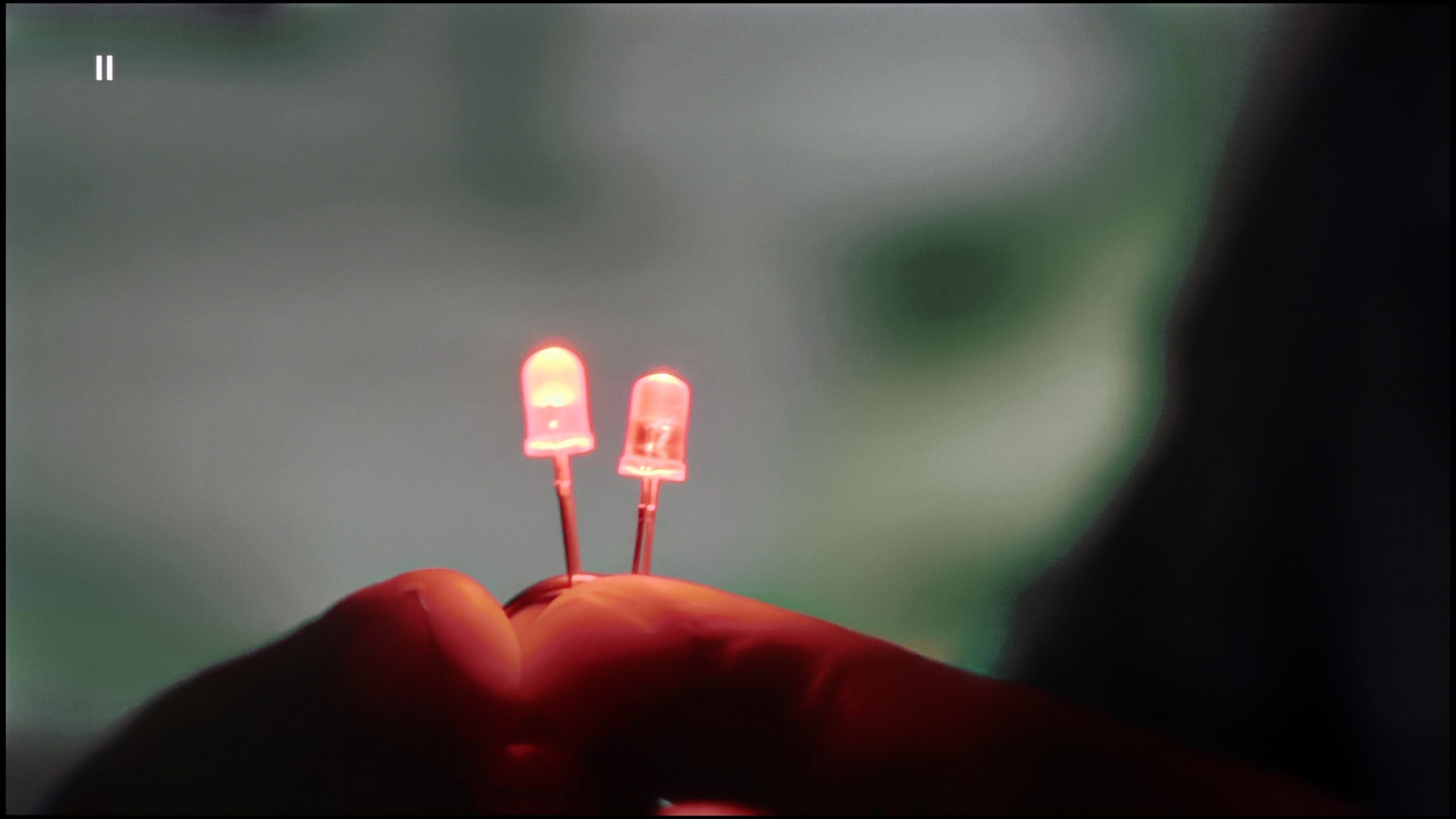

Image without overscan on the SD signal


Upscaling and digital image processing in the LG G5 are quite impressive. The television handles lower quality content very well, especially when the "Smooth Gradation" feature is set to a low level. In this mode, it effectively removes unwanted artifacts and issues with visible tonal transitions. It may also slightly smooth out some desirable details, such as the subtle texture of clothing or skin, but importantly – it does not remove film grain, so it's difficult to speak of a serious compromise here. This is one of those options that is definitely worth enabling.
The G5 also performs well with upscaling, which improves the quality of older materials. The test image with the model looked really solid – slight jaggedness was visible, but that's an effect that cannot be completely avoided. Additionally, there were no problems with overscan, which – contrary to appearances – is not at all obvious, even in 2025.
If someone is worried about potential "steps" when blending colours, there is a simple way in the QNED86A to address this. Just activate the feature called Smooth Gradation and set it to a medium level. Then the television really smooths out all those unwanted transitions quite well – especially in older productions – and it does so in a way that film grain doesn't disappear, nor do strange artefacts appear. In other words, it can be used without concern.
The upscaling itself also performs quite well. Of course, there are no miracles here – with lower quality sources, you can notice characteristic ringing. Fortunately, there is a sharpness slider in the menu, and if someone prefers a more "soft" image, it can be quickly adjusted to personal taste.
Blur and motion smoothness
9/10
7.9/10
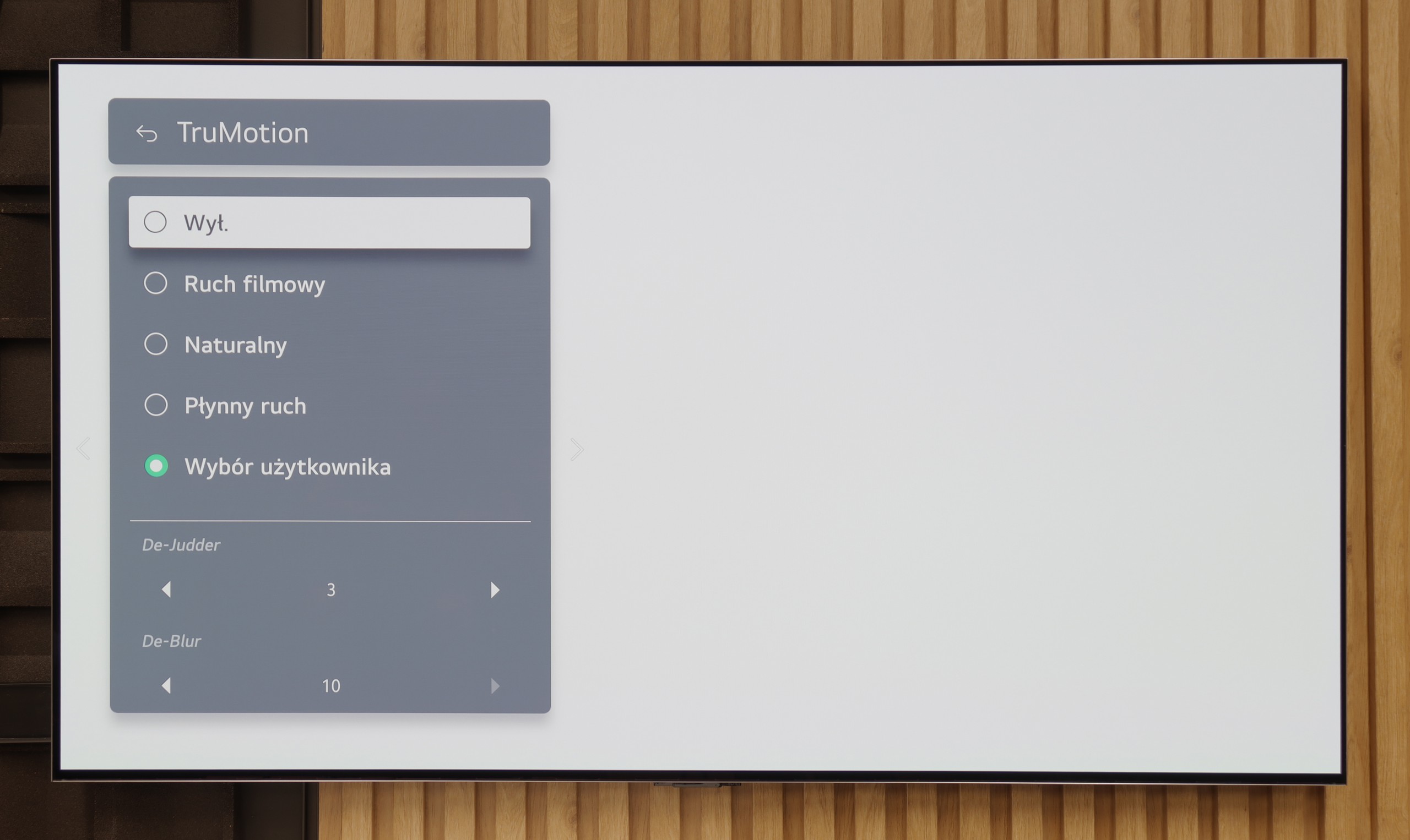

Blur (native resolution, maximum refresh rate):






Blur (BFI function enabled):
Image flickers in this mode
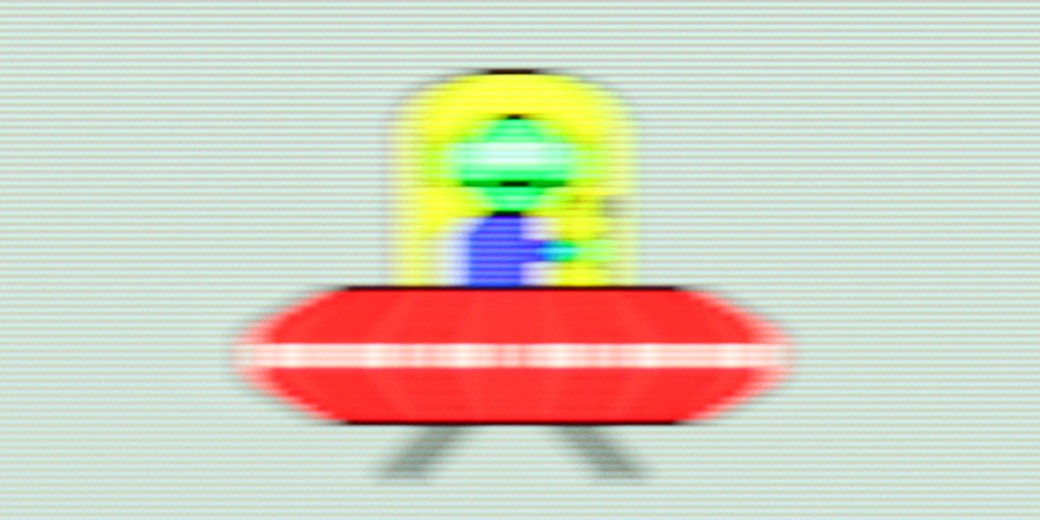
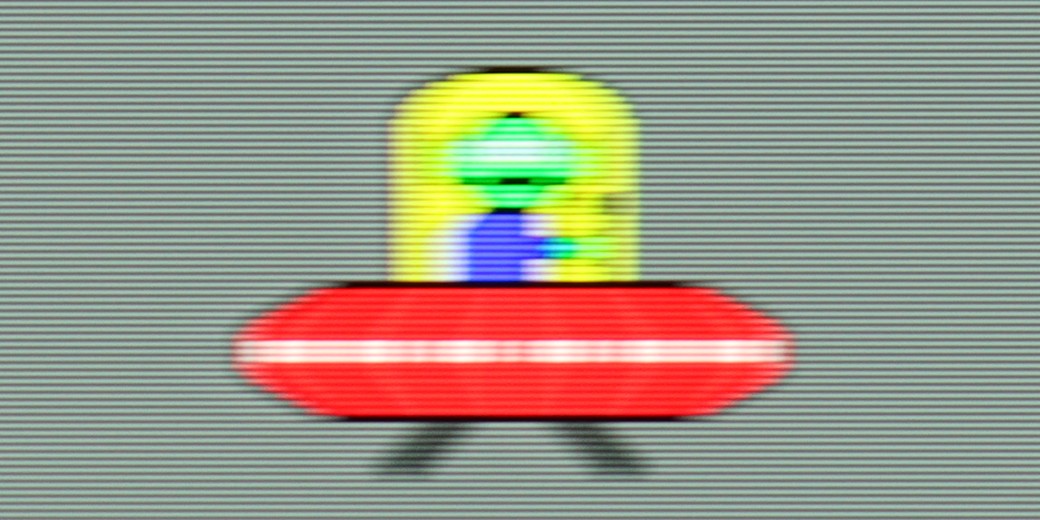




Smużenie (4K 165Hz):



Smużenie ():
The motion smoothness on the LG G5 is simply phenomenal. The television is equipped with a 165 Hz refresh rate panel, and this, combined with the instant response time of the OLED matrix, delivers incredible results. The image does not tear or stutter like on traditional LCD televisions. Like most LG models, the G5 is equipped with a motion smoother, which can be useful when watching films – we are, of course, referring to the TruMotion mode. With the "De-Blur" and "De-Judder" sliders, we can adjust the smoothness of older materials according to our own preferences, whether we want to maintain the characteristic film stuttering or lean towards a more fluid, television-like effect.
The QNED86A is equipped with a panel boasting a refresh rate of 120 Hz, so it can be said from the outset that it is suitable for both sports and gaming. And indeed, it is – the image appears smooth, and motion blur is not particularly intrusive. IPS panels have always had some issues with this, and here too, slight blurring can sometimes be noticed, especially in very dynamic scenes, but it is not something that ruins the viewing of a match or a fast-paced game. For cinema and sports fans, LG has included the traditional TruMotion smoothness enhancer. In the menu, we have two sliders – one for movies (De-Judder) and the other for sports (De-Blur). The first adds missing frames and can be adjusted to modify the character of motion – from raw, cinematic to a smoother, more ‘theatrical’ look. The second improves sharpness during dynamic actions, so it's worth turning it up a bit if you watch a lot of sports.
Console compatibility and gaming features
10/10
9.8/10
- ALLM
- VRR
- VRR range40 - 165Hz48 - 120Hz
- Dolby Vision Game Mode
- Correct implementation of HGIG
- 1080p@120Hz
- 1440p@120Hz
- 4K@120Hz
- Game bar
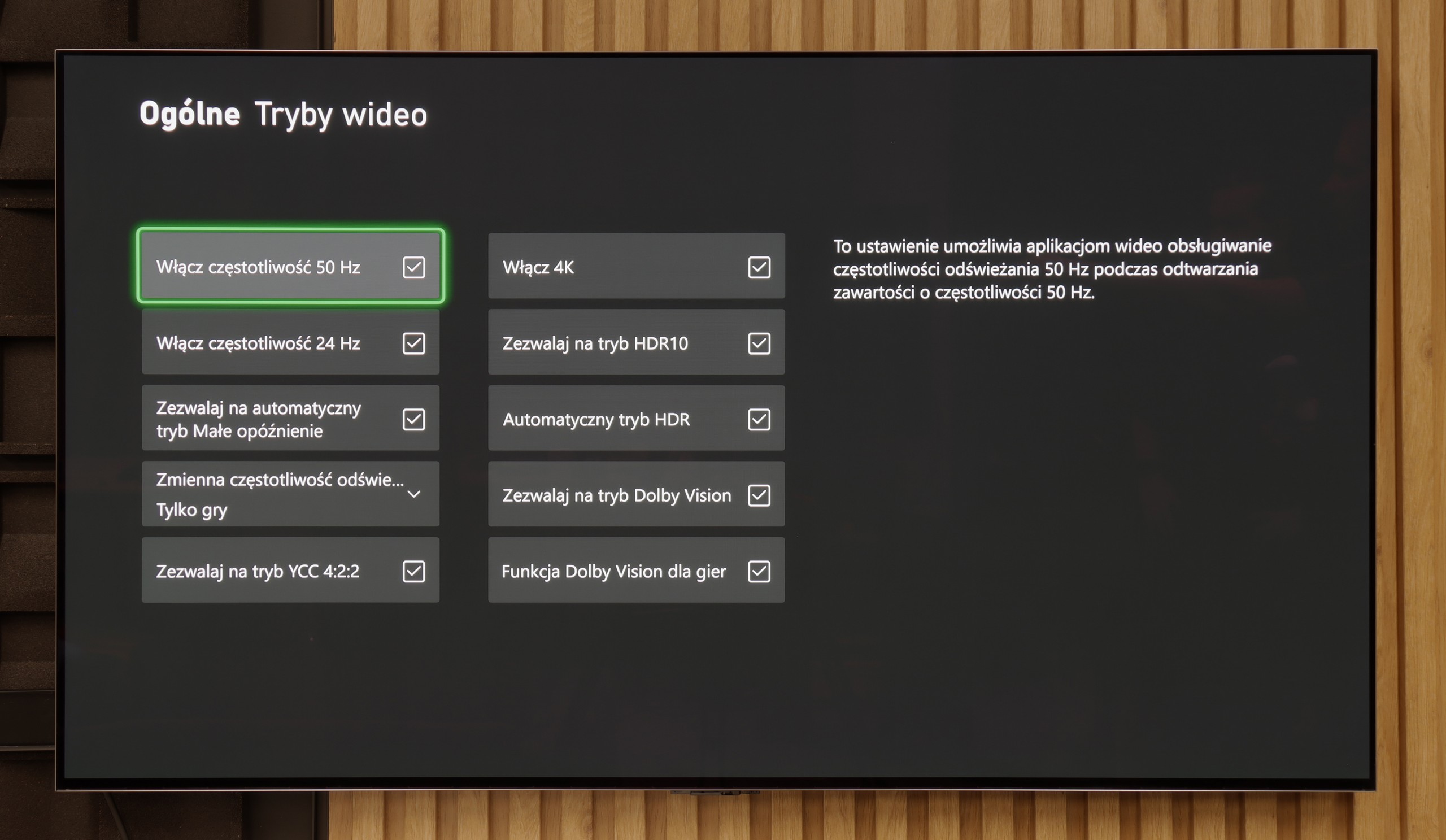

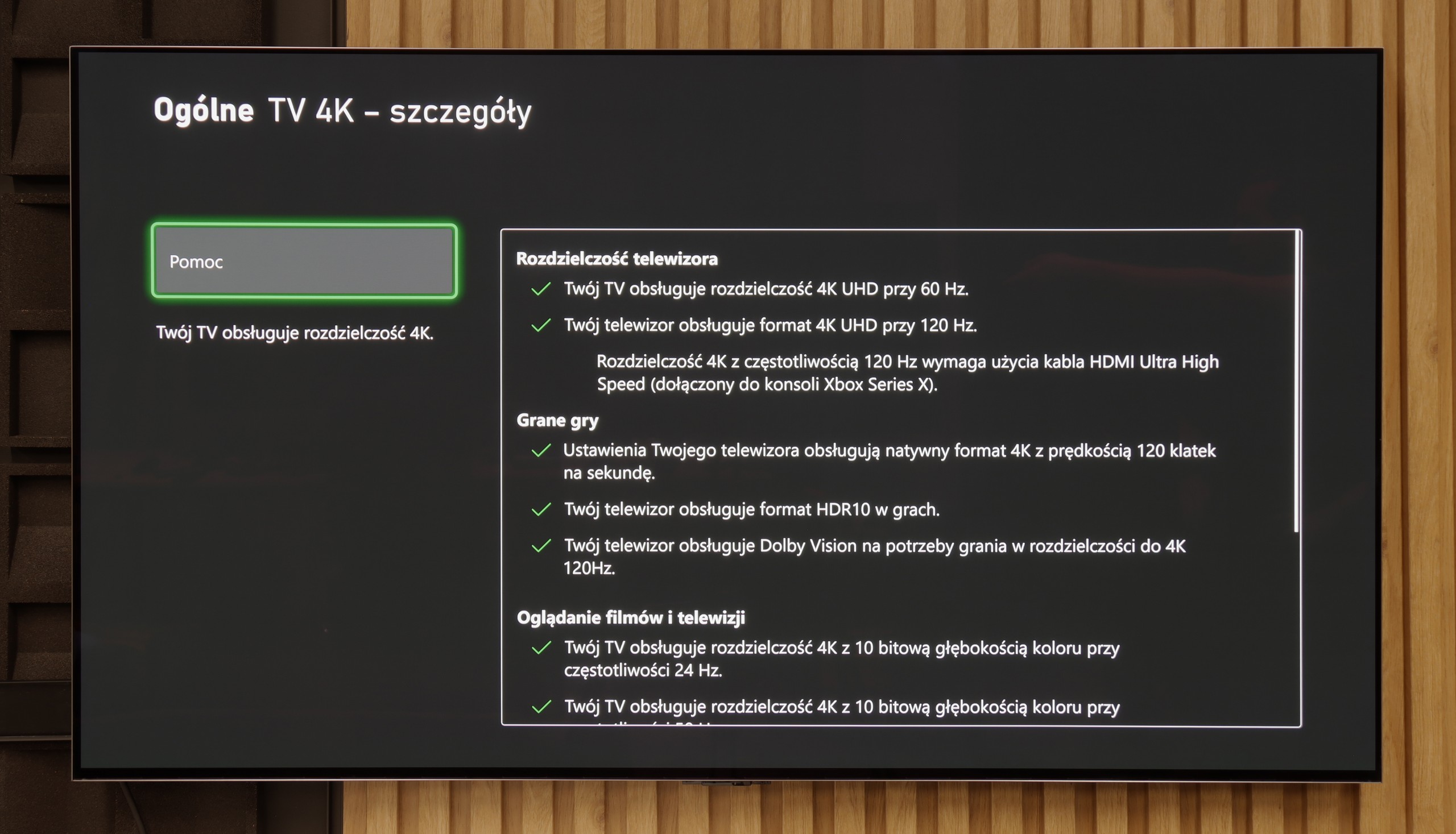

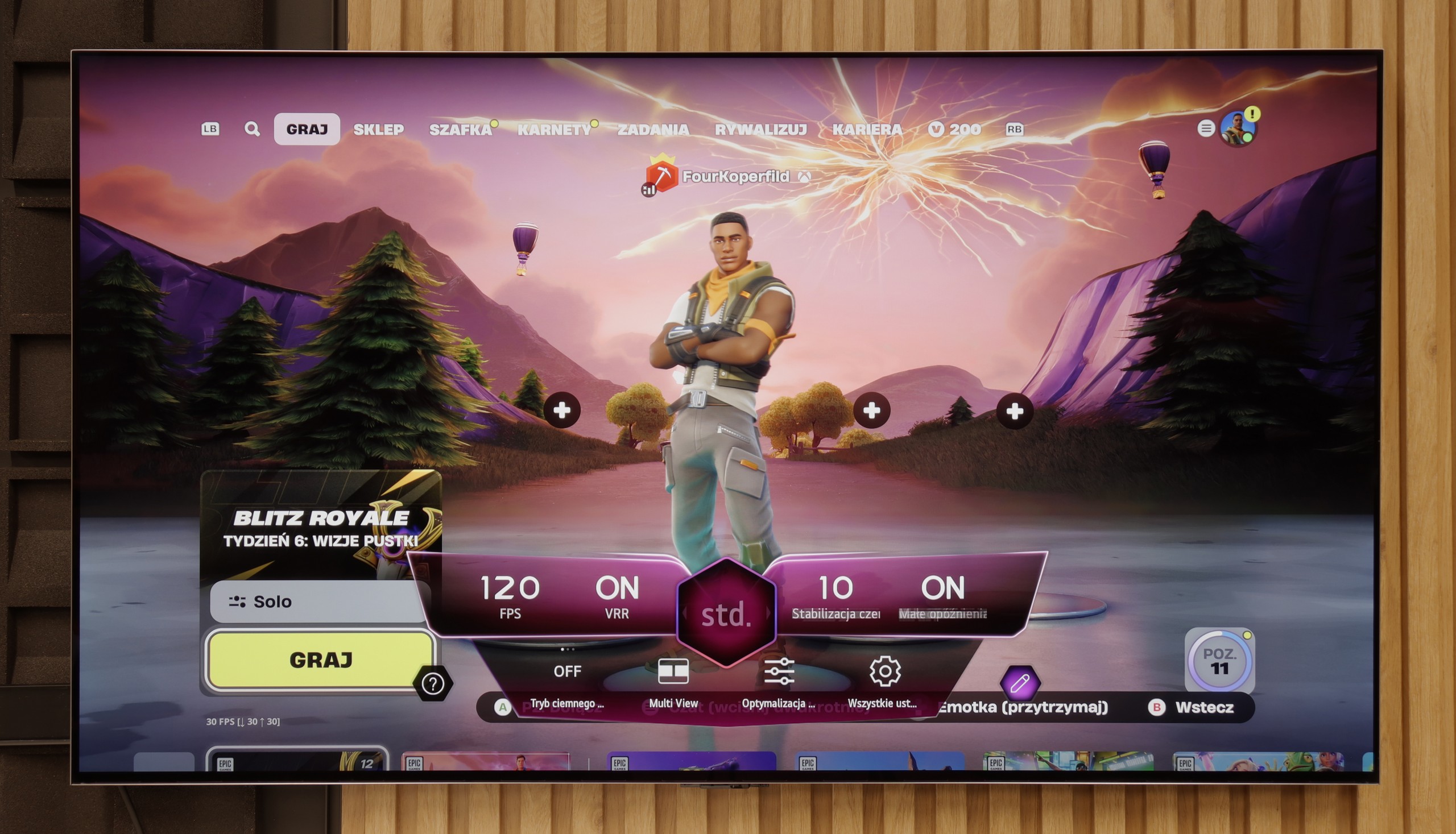

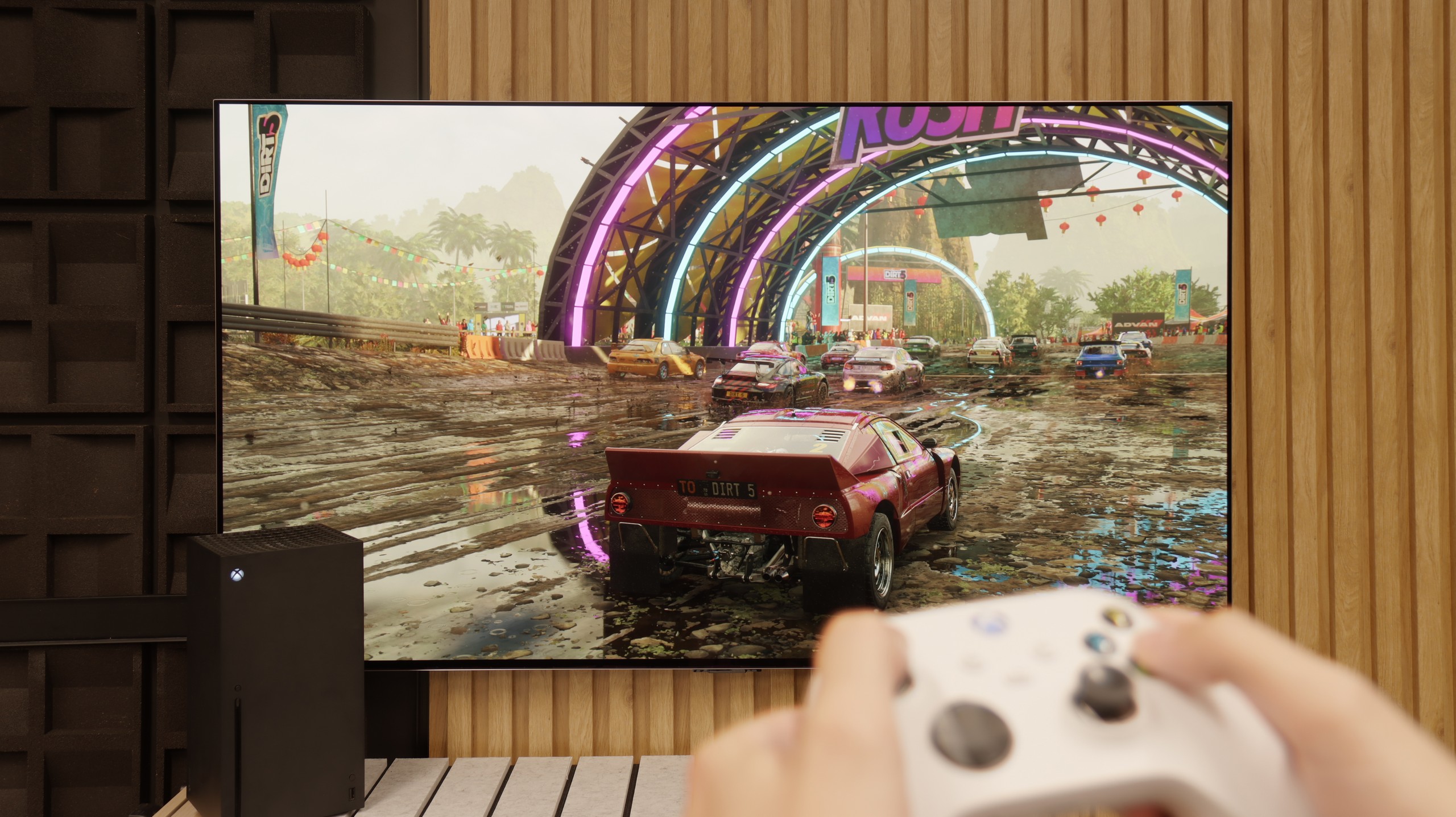

Features for gamers? Perfect. That should be sufficient for you to know what level we are dealing with here. The G5 is a television designed with gamers in mind, so we will find literally everything you could expect from a gaming screen. There is a Game Bar, there is support for high resolutions with high refresh rates – that is, 4K at 120 Hz, and even more, as the panel has a refresh rate of 165 Hz (which PC gamers will benefit from). The television supports variable refresh rate (VRR), automatic low latency mode (ALLM), and also correctly handles HDR in games thanks to the HGiG function. All of this adds up to one of the best sets of gaming features available on the market. Well done, LG.
In terms of gaming, the LG QNED86A6A is a complete tool. It features four HDMI 2.1 ports with full bandwidth of 48 Gb/s, which means that whether you connect a PlayStation 5, Xbox Series X, or a powerful PC, everything will run in full 4K at 120 Hz with support for all functions. This is a significant advantage, as some competitors still only offer two such ports, which can be troublesome with multiple devices. It also includes VRR, or variable refresh rate, which eliminates screen tearing, as well as ALLM, which automatically activates game mode when the console is turned on. Dolby Vision Gaming is also included, along with proper implementation of the HGiG format, so titles that support these formats look more vivid and detailed. On top of all this, there is the Game Optimizer – a sort of control centre for gamers. From this interface, you can view picture parameters in real-time, quickly change modes, activate additional features, or adjust image settings to your personal preferences. The LG QNED86A6A essentially has everything one could expect from a modern gaming television.
Input lag
9.9/10
9.9/10
SDR
HDR
Dolby Vision
The input lag on the LG G5 is incredibly low. The reaction time to our actions – whether we're playing with a controller, keyboard, or mouse – is almost perfect. The controls are instantaneous, and the game responds exactly when we expect it to. The Dolby Vision Gaming mode does introduce slightly higher latencies, but even then it's hard to nitpick – in the worst case, the values hover around 20 ms, which for most gamers will be practically unnoticeable.
There is really nothing to complain about here. The QNED86A6A achieves excellent results – around 5 ms with 120 Hz content and roughly 15 ms with 60 Hz. These values will easily satisfy both console gamers and those who connect a PC to the television. The response to movements is instantaneous, so you can forget about delays between the image and the action on the controller.
Compatibility with PC
8.8/10
8/10
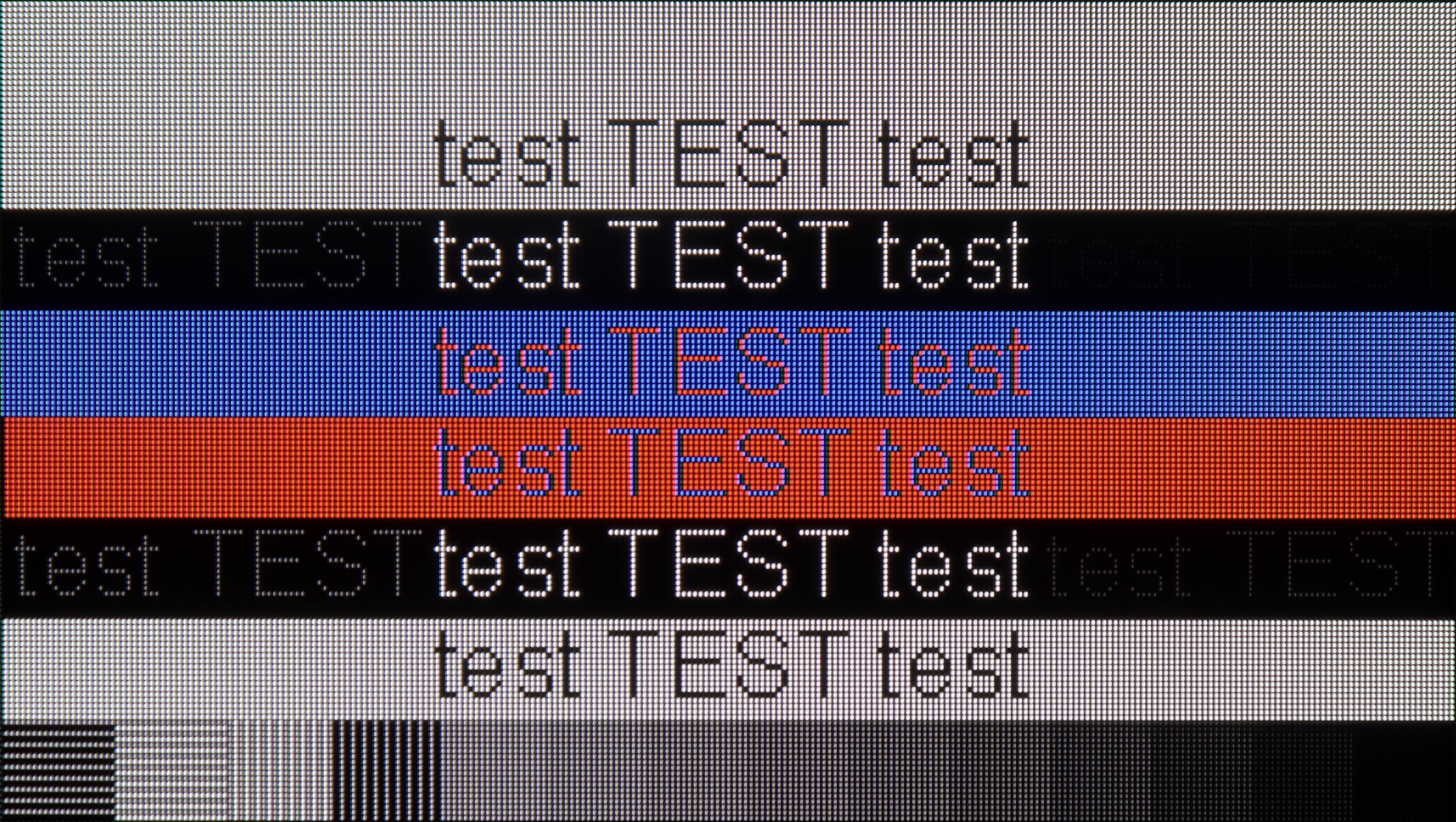

Collaboration with a PC? Nearly perfect. The television, as we mentioned earlier, has fantastic features for gamers – including those using a PC. Onboard, we find full G-Sync certification, a 165 Hz panel, and a super-fast input lag of around 5 ms. Thanks to the correct implementation of chroma 4:4:4, fonts are very easy to read – both the smallest and the largest. Although due to the WRGB subpixel layout, there may be slight shadows around the characters, for most users this effect will be virtually unnoticeable. The G5 excels as a screen for work, entertainment, and gaming – also from a computer.
LG QNED86A, thanks to the use of an IPS matrix, a full RGB subpixel layout, and correct implementation of chroma 4:4:4, makes fonts look fantastic on the QNED86A6A. The text is sharp, clear, and legible, making the television ideal for office work. This is important, as this year the model also debuts in a 43" size, and such a variant can easily land on a desk and serve as a large monitor. Of course, some users who opt for the 43" version will be gamers, and here too there are no reasons for complaints. The television supports 4K at 120 Hz, so gameplay is smooth and enjoyable. It's a bit of a shame that there is no higher refresh rate mode like the 144Hz declared by the manufacturer, as PC gamers would surely appreciate that. Despite this, the QNED86A6A performs really well as a monitor for gaming and work.
Viewing angles
7.5/10
6.9/10
The viewing angles on the LG G5 are very good, mainly due to the use of a WOLED panel. It's hard to find fault here – the image does not significantly lose brightness or quality even when viewed from the side. However, it should be fairly noted that there is a slight regression compared to the G4 model. The predecessor used an MLA panel with micro-lenses, which offered slightly better light distribution. Also, compared to QD-OLED panels, the angles are worse. Nevertheless, the overall perception of the image at an angle remains very good and should not be an issue in everyday use.
QNED86A6A performs very well in this regard. The IPS panel used here ensures that the image maintains its brightness and colour saturation even when viewed from an angle. There is none of the fading effect often seen in cheaper TVs with VA panels. Of course – there is no point comparing this to the level offered by organic panels, where colours and contrast remain perfect from almost every angle. But as far as LCD TVs go, this is definitely one of the better results and is more than sufficient for watching films or sports together on the sofa with a larger group.
TV efficiency during daytime
8/10
5.8/10
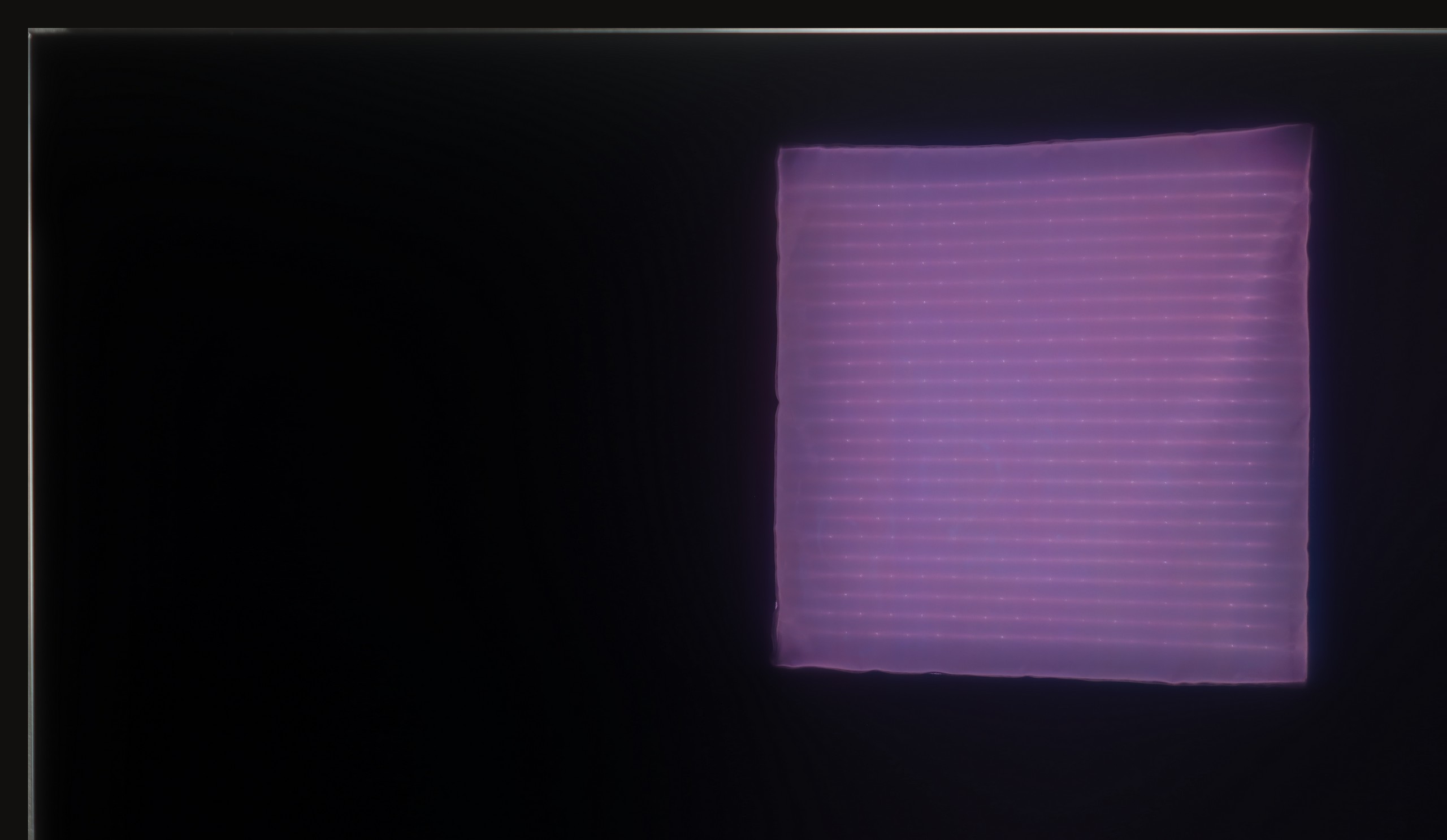



Matrix brightness
Average luminance SDR
LG QNED86A / QNED85A / QNED87A: 462 cd/m2
LG OLED G5: 810 cd/m2
The LG G5, thanks to its very high brightness, performs excellently in bright rooms. Even with SDR content, the average brightness value is around 800 nits, which is significantly more than in standard televisions. It will handle a bright living room with ease. Although the panel averages moderate reflection suppression, it still maintains significantly better blacks and colours during the day than QD-OLED panels or those with a matte finish. The G5 will perform well in very sunny rooms – unless you truly cannot stand reflections on the screen. In that case, you will need to use blinds or consider purchasing a television with a matte panel.
QNED86A6A is not a champion of brightness, but it manages adequately. Thanks to the moderately high brightness of the panel and quite decent reflection handling, the television will perform well in typical, moderately lit living rooms. The image remains clear, and the colours do not lose their intensity in daylight. However, let's not fool ourselves; this is not a screen that will cope in extremely bright conditions, where sunlight streams through large windows and floods the room.
Details about the matrix
Subpixel Structure:
Panel uniformity and thermal imaging:


TV features
8.5/10
8.4/10
- HDMI inputs0 x HDMI 2.0, 4 x HDMI 2.1 48Gbps0 x HDMI 2.0, 4 x HDMI 2.1 48Gbps
- Other inputsIR (remote)
- OutputsToslink (Optical audio), eARC (HDMI), ARC (HDMI)Toslink (Optical audio), eARC (HDMI), ARC (HDMI)
- Network InterfacesWi-Fi 2.4GHz, Wi-Fi 5GHz, Ethernet (LAN) 100MbpsWi-Fi 2.4GHz, Wi-Fi 5GHz, Ethernet (LAN) 100Mbps
- TV receptionDVB-T, DVB-T2, DVB-S, DVB-S2, DVB-CDVB-T, DVB-T2, DVB-S, DVB-S2, DVB-C
Classic features:
- Recording to USB (terrestrial TV)
- Recording programming
- Picture in Picture (PiP)
- RF remote control (no need to aim at the screen)
- Backlit remote control
- Teletext
- Audio only mode
- Bluetooth headphones support
- Simultaneous Bluetooth headphones & TV audio
Smart features:
- AirPlay
- Screen mirroring (Windows Miracast)
- Voice search
- Voice search in native language
- Ability to connect a keyboard and mouse
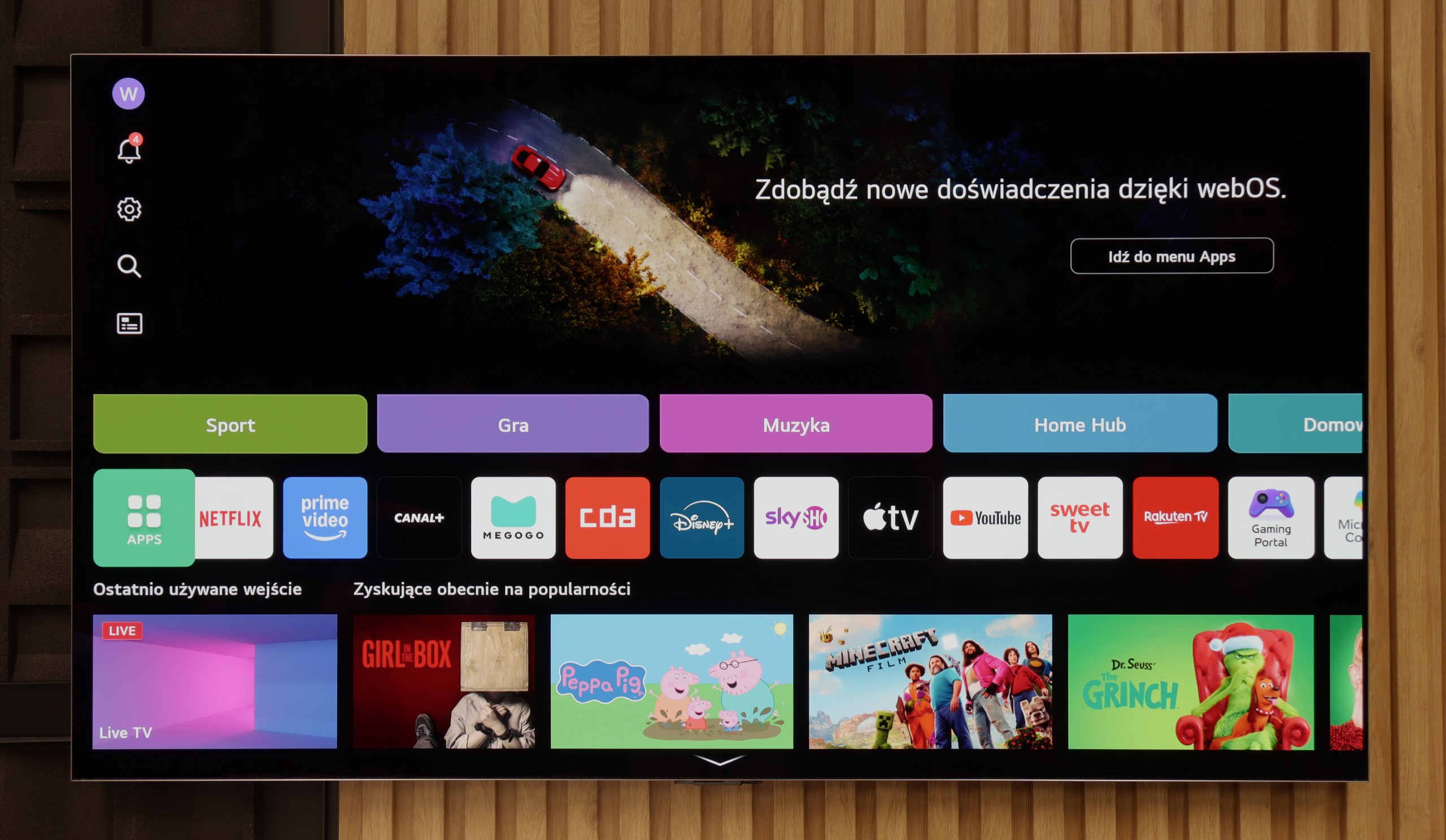
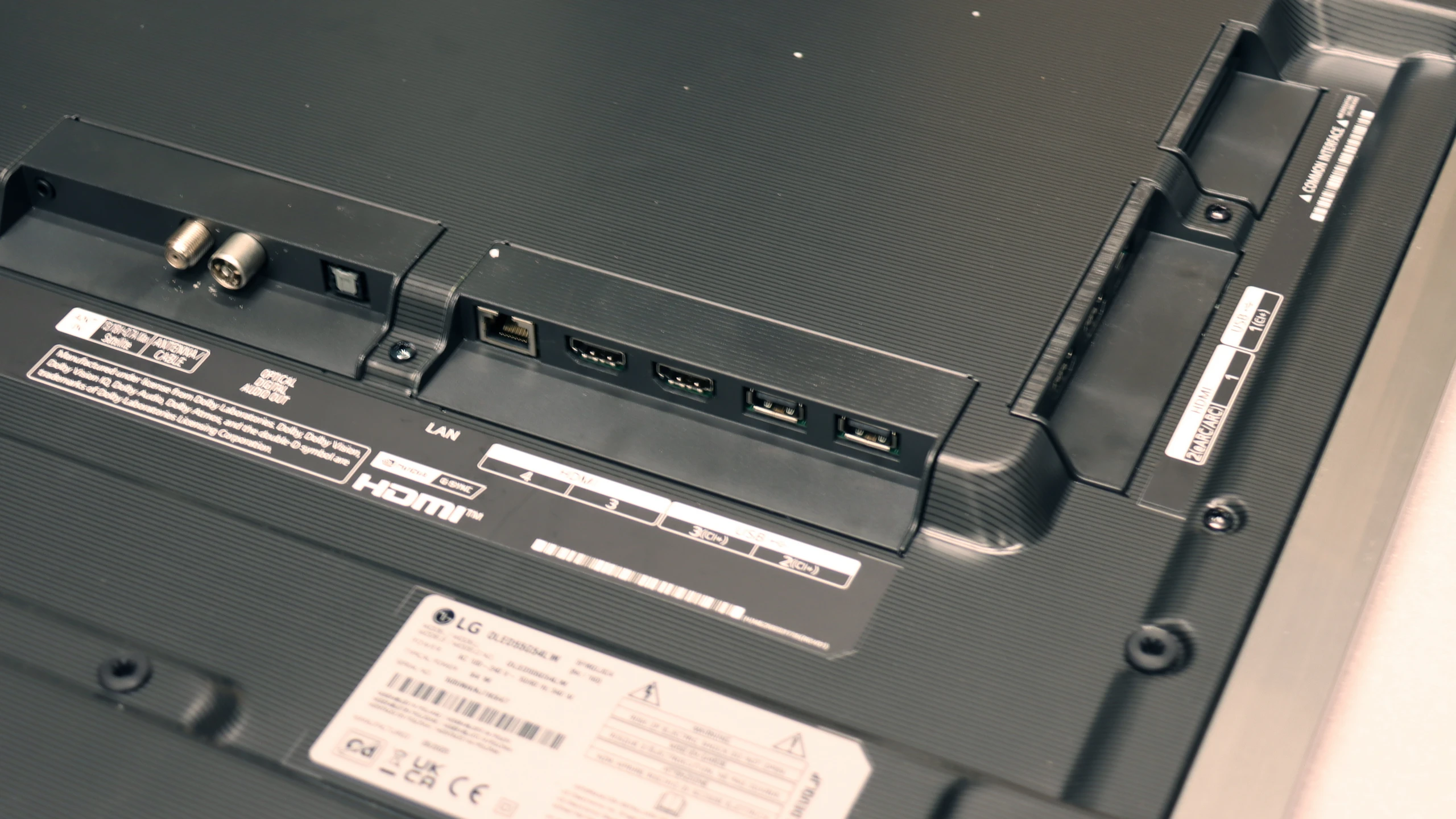
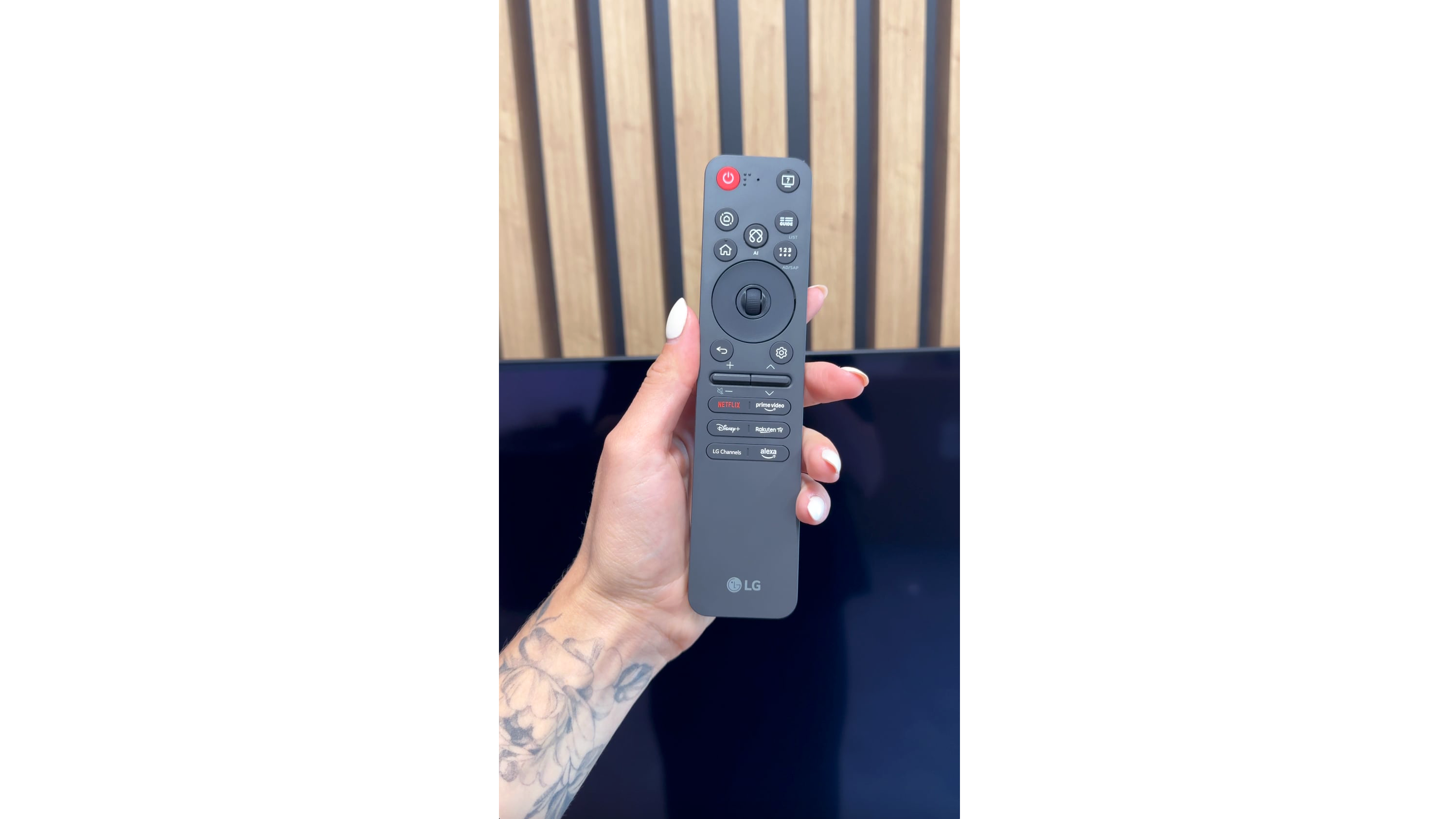
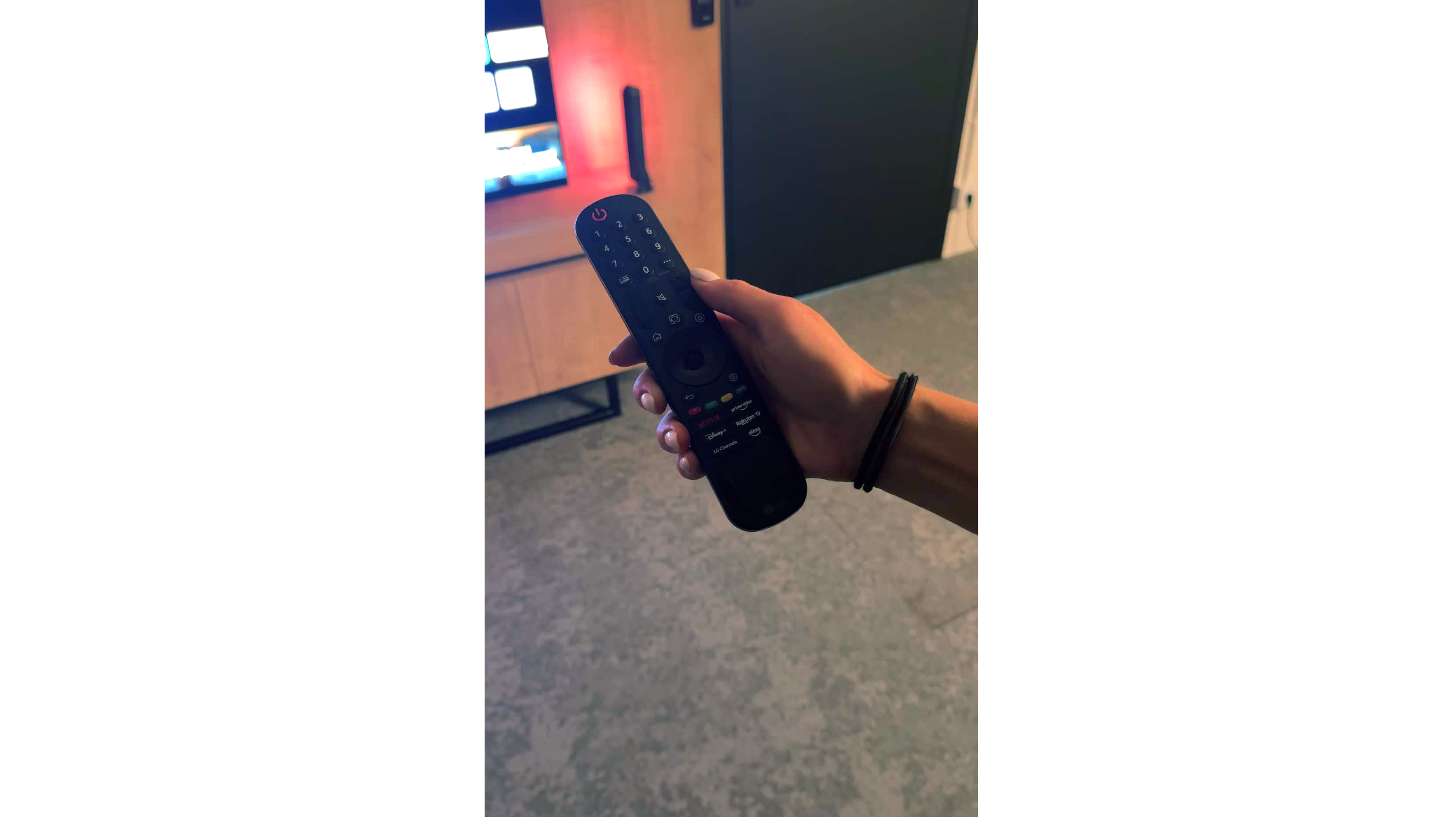




Classic features
LG G5 has a lot to offer when it comes to classic television features. Aside from the inability to watch two sources (PIP), the television handles everyday usage excellently. There are no issues connecting external Bluetooth devices, such as headphones, and the EPG interface is very clear and understandable – even for those who are not particularly tech-savvy.
Smart TV Features
The Smart TV in the G5 operates on the WebOS system – it is the heart and brain of the entire television. With the Magic remote, using the G5 is truly enjoyable. We control the cursor on the screen with wrist movements, which somewhat resembles using a mouse in the air. The system itself is highly developed and offers everything one could expect: AirPlay, screen mirroring, voice search, and voice commands – all of this works smoothly and without delays. Without a doubt, it is one of the best operating systems in televisions on the market.
Note:
During our tests, we had virtually nothing to complain about – perhaps with one exception: the confusion surrounding the remote. Depending on the market and the specific version of the model, you may encounter the new, minimalist Magic remote (without a numeric keypad) or the older version with a full set of buttons. We tested the G54LW model, which came with the new Magic remote, but it's hard to say how the situation looks in other variants. It may be a similar situation to the LG C5 series, where the addition of the remote also depends on the specific market.
Smart Features: webOS
QNED86A6A operates on the well-known webOS – a system that has been a strong point of LG televisions for years. Everything runs quickly and stably, applications launch without significant delays, although the interface can occasionally feel a bit overwhelmed by advertisements. Fortunately, on a day-to-day basis, convenience outweighs these shortcomings. A significant advantage is the Magic Remote control, which allows you to operate the cursor like a mouse – it's one of those solutions that you quickly get used to and find it hard to give up later. In the new version, the remote is slimmer, as it has been stripped of the numeric keypad. Some will appreciate the simplicity, while others will miss the classic set of buttons; it's more a matter of habit.
Classic Features
We also find a few features on board that may not always be obvious in 2025. There is the ability to record programmes from the built-in DVB-T2 tuners to USB, so you can easily return to a match or series at any time. In the evening, Bluetooth headphone support will come in handy – especially if someone in the house falls asleep quicker than we do. Additionally, there is a full set of HDMI 2.1 ports with eARC support and audio formats such as Dolby Digital and Dolby Atmos.
Playing files from USB
9/10
8.9/10
Supported photo formats:
Maximum photo resolution:
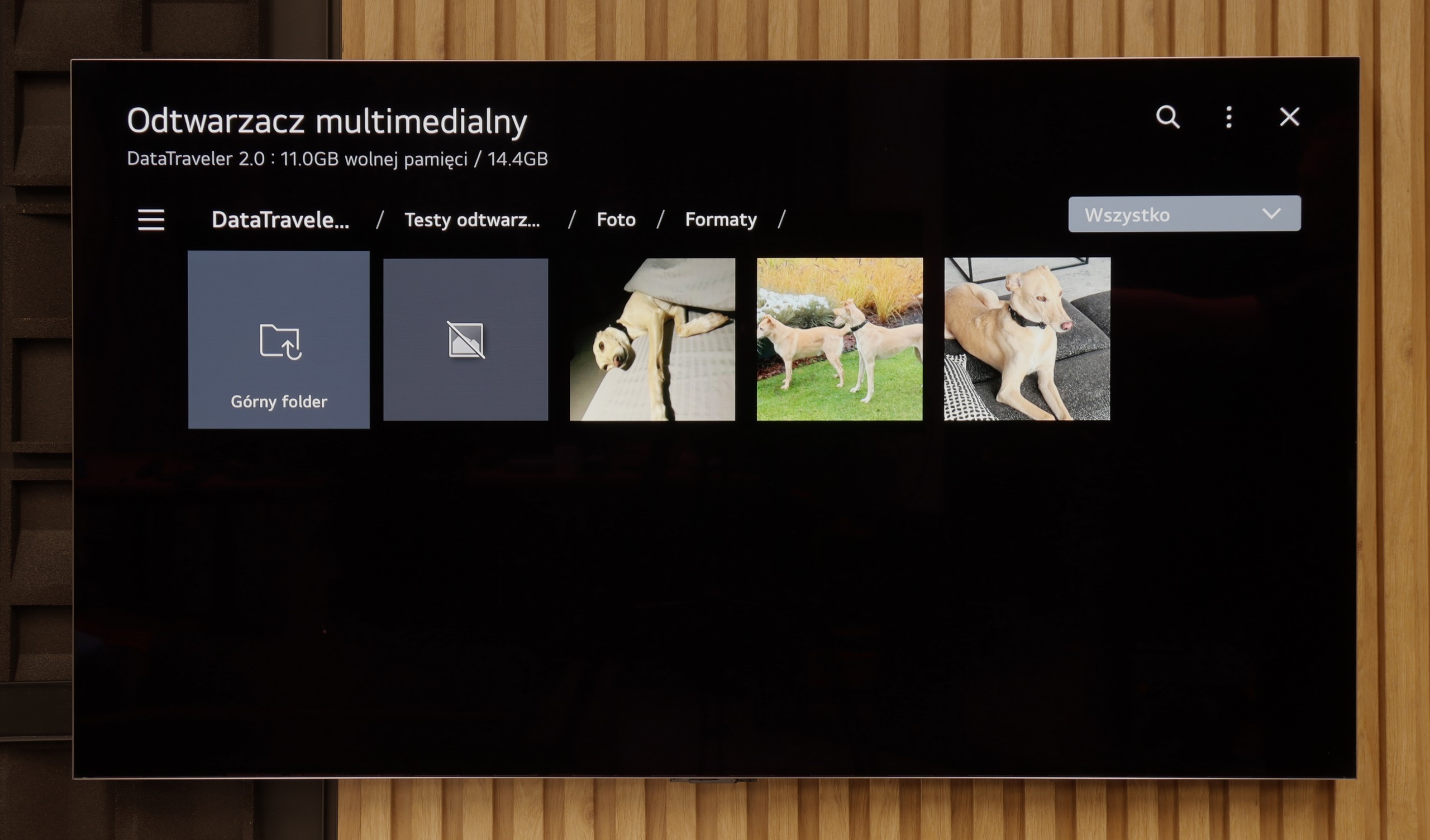

The built-in media player in the LG G5 is really very good. It supports practically everything you might expect from a modern television – most popular formats work without any issues, and the app's performance is swift. Our only disappointment was the lack of support for very high bitrate HEVC 85 Mbit/s files – similar to the C5 and B5 models. Interestingly, the same file played flawlessly on last year's LG OLEDs, so it's hard to say what has caused this change. Nevertheless, in everyday use, the G5 will handle the vast majority of content without the need to connect any external devices for media playback.
The built-in media player in the QNED86A6A performs quite well with the most popular audio and video formats. During testing, we had no issues playing MP4, MKV, or MP3 files; everything played smoothly and without stutters. The television also handled most images, although we encountered a typical barrier for many manufacturers – lack of full support for the HEIC format from Apple. So if you use an iPhone daily and store photos in this standard, you will need to convert them beforehand or, better yet, transfer them using AirPlay. Other than that, it’s hard to find fault as, for a built-in solution, it's really decent.
Apps
9.1/10
9.1/10














































Sound
8.7/10
6/10
- Maximum volume-84dB
- Dolby Digital Plus 7.1
- Dolby True HD 7.1
- Dolby Atmos in Dolby Digital Plus (JOC)
- Dolby Atmos in Dolby True HD
- DTS:X in DTS-HD MA
- DTS-HD Master Audio
The sound on the LG G5, considering its slim profile, is truly phenomenal. When listening to music, one can feel a light, pleasant bass, and in films, the dialogue is clear and audible – it does not get lost even in dynamic scenes. Unfortunately, a certain disappointment is the lack of support for the DTS format, which LG used in its older models. It’s a shame, as many home cinema enthusiasts may feel this as a step backwards.
In terms of sound quality, the QNED86A6A performs quite decently, but there's no denying that it isn't at a level that would impress home cinema enthusiasts. The sound is clear and distinct, with dialogues easy to hear, but overall it sounds rather flat and definitely lacks solid low tones. For everyday television viewing, streaming services, or news, this level is acceptable; however, if you plan to watch movies or play games more often, even a basic soundbar will make a significant difference.
Acoustic Measurements
No acoustic data
84dBC (Max)
75dBC


